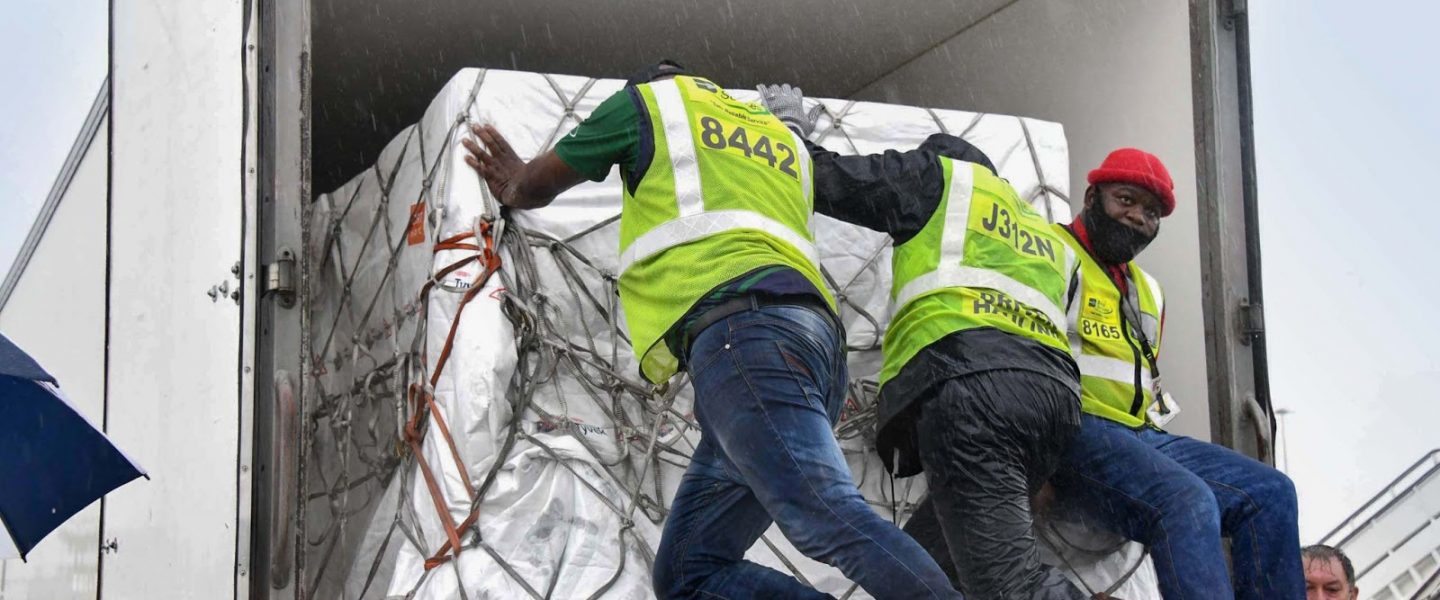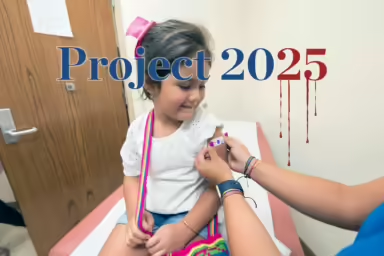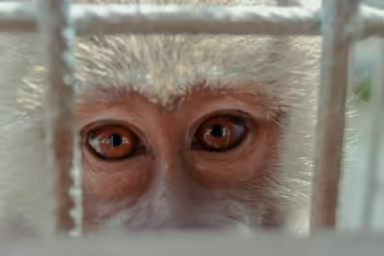Nations around the world continue their fight against the pandemic.
In May, our correspondents reported on select countries’ responses to COVID-19 outbreaks, their differing vaccine production and rollout protocols, and the impact on citizens. Here are further updates on the state of some of these global efforts to slow the spread of coronavirus.
South Africa
The South African National Institute for Communicable Diseases (NICD) planned to vaccinate 67 percent of the population by December 2021 using a three-phase rollout, starting with the most vulnerable group of frontline workers, then individuals over the age of 60, those in group homes, prisons, and shelters, and workers in the hospitality and education sectors. Phase three included any remaining adults.
At press time, a mere 4 million residents (6.7 percent of the population) have received one shot of the government-funded vaccine; only 2.5 percent are fully vaccinated, despite the government providing free bus transport from local pick-up points to designated vaccination centers and dispatching mobile vaccination units to visit South African Social Security Agency offices. The government also provides door-to-door registration — after which individuals are directed to the nearest vaccination site. In an effort to give health care workers time to recuperate and for the government to save on overtime costs, vaccination appointments are not available on weekends or public holidays.
With the recent spike in delta-variant cases in the Gauteng province and a cumulative 2.24 million confirmed cases and 65,972 COVID-19 deaths, South Africa has entered phase three to speed up its vaccination rate. Registration is now open to adults ages 50 and above, as well as members of the police service and the government. The government hopes to alleviate pressure on the Johannesburg city health care system, which lacks intensive care unit capacity for more serious COVID-19 cases. Private and public sectors are also collaborating to transform sections of some hospitals into ICUs to help remedy this.
So far, South Africa has received 1.4 million doses of the Pfizer vaccine via the World Health Organization-backed COVAX program, a global effort meant to supply COVID-19 vaccines to low-income nations. Through this program, the country expects roughly another 10.6 million doses to be delivered in the near future. Meanwhile, the South African regulatory authority has approved CoronaVac, a vaccine manufactured by the Chinese company Sinovac, though it’s only been approved for use in those between 18 and 59 years of age.
There was some concern about South Africa’s vaccination strategy after the country sold 1.5 million doses of the AstraZeneca vaccine to other member countries in the African Union after a study was released stating that the vaccine didn’t protect against the South African beta variant. South Africa sold the vaccines despite the WHO’s advice to continue administering them — advice that was backed by a study released six months later that stated the AstraZeneca vaccine could have been effective against the beta variant.
In late June, President Cyril Ramaphosa introduced adjusted Level 4 restrictions, banning any gatherings, alcohol sales, and travel to and from high-risk areas like Gauteng. The new restrictions, which are still in effect, also extended curfew times (indoors between 9 p.m. and 4 a.m.) and closed schools early.
Credit Agricole CIB has expressed concern about countries like South Africa that are behind in administering vaccines and whose economic climate is taking the brunt of the pandemic’s financial impact. If their approach does not change, the NICD’s vaccination target seems unrealistic; at the current pace, South Africa will have only 50 percent of their population vaccinated by 2023.
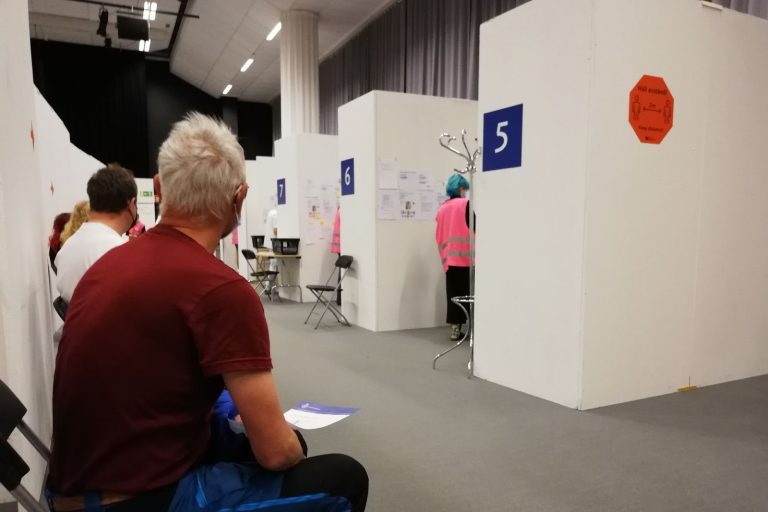
Sweden
Sweden has continued a no-lockdown approach to COVID-19. Now, the country’s increased rollout of vaccines has drastically decreased confirmed cases — a relief after a 122 percent spike in cases between January and May 2021. January recorded the highest daily confirmed cases: 736, compared to 753 cases recorded in the same week for the United States.
Almost 40 percent of Sweden’s 10 million residents are fully vaccinated, while another third have received one shot. Still, the country is behind its projected targets due to delays in Pfizer vaccine deliveries. The country is now vaccinating its Phase Four group, including adults under 65.
The website for Sweden’s Public Health Agency (Folkhälsomyndigheten) includes a thought-provoking section entitled “Will a vaccine stop the pandemic?” Sweden, like South Africa, has declared vaccinations voluntary, saying that the vaccine alone is not the answer to the end of the pandemic. The country is encouraging good hygiene and is offering the shot free of charge for anyone living in Sweden with a personal identity or coordination number. This complicates things for people who are in the country for short-term work; however, the government is issuing temporary residency cards to accommodate such individuals.
While Sweden works toward the required two doses per person, it has also shared 1 million doses of the AstraZeneca vaccine. This has enabled the COVAX program to assist lower-income countries, especially within Africa, where there is a need for more vaccines and second doses.
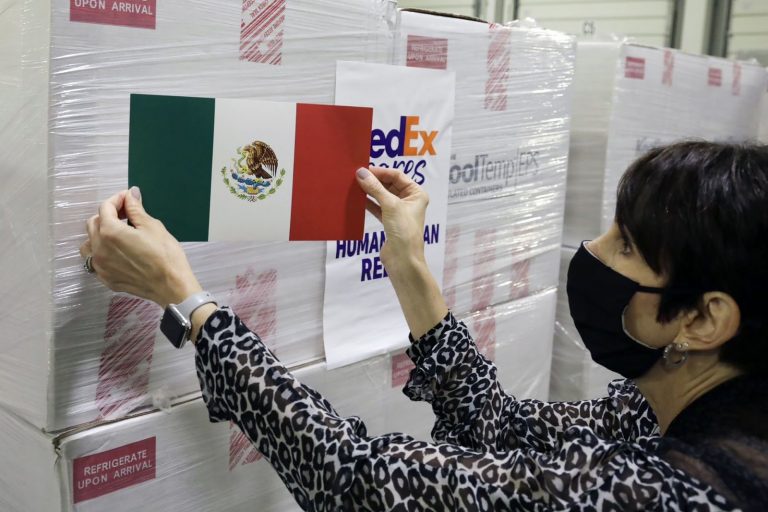
Mexico
Mexico has been hard hit by COVID-19 — particularly the country’s health care worker population. A scathing report commissioned by the WHO found that, as of early 2021, Mexico had the highest rate of health care worker deaths in the Americas, outpacing US health care worker deaths by more than 50 percent. Mexico saw high infection rates in summer 2020 and again in early 2021 but wasn’t able to significantly bring down COVID-19 rates in the intervening months.
The same report also found that much of the suffering from COVID-19 could have been avoided with greater government action. Throughout the pandemic, the Mexican government prioritized fiscal austerity and downplayed the seriousness of the health crisis at the expense of better disease control. In December 2021, when Mexico City was experiencing a spike in coronavirus spread, government officials misled the public by claiming that the city had not reached levels of infection that merited a city-wide lockdown while, according to the government’s own reporting, the city had reached said threshold.
On top of a lack of government action, Mexico’s vaccine rollout has had mixed success. The Mexican government has contracted 10 different vaccine types, trailing only Brazil in terms of total number of different vaccine brands. In addition to the Pfizer and AstraZeneca vaccines, Mexico is dispensing doses produced by the Chinese companies Sinovac and Sinopharm, which have not yet published the results of the late-stage trials for their vaccines.
There are also reports of inequities in vaccine distribution. Some wealthier neighborhoods have had access to the well-tested Pfizer vaccine, while more impoverished neighborhoods were vaccinated with the Chinese-produced vaccines.
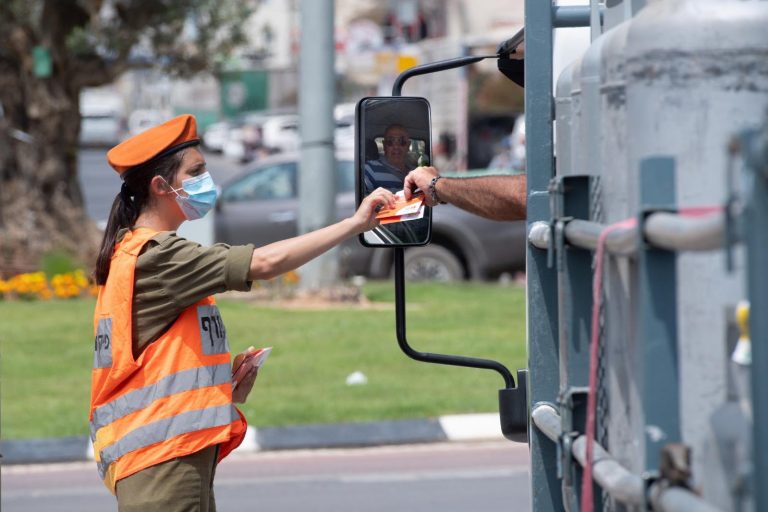
Israel
In Israel and the occupied territories, the effort to combat COVID-19 is a tale of two cities.
About 60 percent of Israel’s population is fully vaccinated, and in June the country lifted all COVID-19 restrictions. But in Palestine, only 7 percent of residents are fully vaccinated. Israel has extended its vaccination program to the some 130,000 Palestinians who work in Israel and the occupied West Bank, though the Israeli government is under pressure to do more to alleviate the inequality. In response to the vaccine disparity, the Israeli government has said that it is up to the Palestinian Authority — the main governing body of the Palestinian people — to innoculate its residents. Rights groups say that the onus is on Israel to do so as an occupying power.
Recently, the Israeli government and the Palestinian Authority agreed that Israel would advance 1.2 million doses of the Pfizer vaccine to Palestine in June, then be reimbursed by the vaccine company for said doses later in 2021. The Palestinian Authority canceled the deal, however, when it became clear that the vast majority of the vaccines would expire before they could be distributed.
Although Israel’s vaccine program is largely hailed as a success, the new delta variant poses an obstacle to reaching full herd immunity. Early data suggests that 90 percent of new infections are caused by the delta variant, many of which are in children under 16. In response, Israel has moved to expand its vaccine program to include children between ages 12 and 15.
Australia
Australia has been internationally lauded for its COVID-19 response and was nearly COVID-free before political point-scoring and complacency caused the nation to fall behind in their battle to contain the virus. Closed borders and lockdowns, while controversial and often problematically policed, have been generally supported by the public as part of the pandemic response.
However, as cities continue to face lockdowns even after the implementation of vaccination programs, some feel that the emergency-level response is becoming disproportionate. In recent weeks, several major cities have been subject to snap lockdowns over a few cases of the delta variant, all of which have now subsided. Sydney and Melbourne are the only exceptions; the cities are likely to remain in lockdown for many more weeks after Sydney recorded over 100 cases in one day, and Melbourne’s numbers continue to creep up, with 10 to 20 new cases per day. All cities remain on their toes, with the virus still circulating around inside “Fortress Australia.”
The issues lie in a lack of supply and planning around the rollout, which has fully vaccinated
only approximately 12 percent of the 16-and-older population. Frustrations mounted this week upon release of a government ad promoting vaccinations that featured a young woman struggling to breathe on a ventilator, with the tagline “COVID-19 can affect anyone.” However, people under 40 are not yet eligible for the AstraZeneca vaccine and lack easy access to other vaccines.
Prime Minister Scott Morrison has been heavily criticized for not securing adequate doses of multiple vaccines. Since he was one of the first people to receive the vaccine in Australia, his rhetoric that the rollout is “not a race” is lost on most. His late night press conferences, announcements of conflicting medical advice, and an overall failure to communicate information about the rollout have left little confidence in many Australians.
The timing of the rollout is also politically paralyzing, with a federal election due within the next year. The 2021 federal budget projected that international borders will not open until mid-2022, indicating to Australians that COVID-19 is not an immediate threat; thus, the vaccine rollout isn’t an immediate necessity. The government announced this week a four-phase pandemic exit strategy — which includes reducing the number of international arrivals by 50 percent. The approach is beginning to receive widespread and global criticism.
Meanwhile, here’s a cautionary tale about the dangers of breaking COVID-19 curfew, especially when sunbathing naked.
Canada
Canada’s vaccine rollout got off to a rocky start, attracting worldwide attention for the delay in the supply chain in a country known for its health care.
Writing in MacLean’s, Justin Ling said trade plans with Chinese vaccine manufacturer CanSino were unreliable and late; they also were unable to increase domestic production, forcing them to secure vaccines from Europe.
In Canada, political fisticuffs ensued as Ontario Premier Doug Ford described the rollout as “a joke,” while Erin O’Toole, leader of the Conservative Party, pointed to Prime Minister Justin Trudeau’s Liberal Party’s actions as the cause of the third wave. Ontario reached a 10 percent positivity rate earlier this spring (Florida was at 9 percent at the time). And Ontario’s official Opposition Leader, Andrea Horwath (NDP), got into a near-screaming match on the House floor with Ford over the mishandling of the pandemic.
In an interview with NPR, Vancouver-based health columnist André Picard pointed to a number of factors, primarily lack of supply. “We have contracts for about 400 million doses, but they’re all backloaded, so they’re coming very slowly. We don’t have any domestic production,” he said. “And we have a decentralized health system, which means that the different rules in different parts of the country are very confusing for the public. So a whole series of factors have made this kind of a mess.”
Ontario is the most populated province in the country, with 38.39 percent of the national population living there. When the vaccine rollout began, Ontario’s provincial government released a list of “hot spot” postal codes, specifying that residents in these locations would be eligible to be vaccinated. The list created provincial criticism as little information came with the announcement, creating confusion for residents.
Canadian Vaccine Distribution
| As of July 14th 2021, there are 2,631,008, COVID-19 vaccine doses in the National Federal Reserve that provinces and territories can draw from. | ||||
| Total COVID-19 vaccine confirmed distribution as of July 14, 2021, at 10:50 a.m. | ||||
| Vaccine distribution | Pfizer/BioNTech | Moderna | AstraZeneca | Total |
| Total distributed in Canada | 32060946 | 18020730 | 3084760 | 53166436 |
| Newfoundland and Labrador | 440700 | 271280 | 41100 | 753080 |
| Prince Edward Island | 135135 | 75980 | 9900 | 221015 |
| Nova Scotia | 830310 | 501960 | 60000 | 1392270 |
| New Brunswick | 660855 | 347470 | 61500 | 1069825 |
| Quebec | 7263147 | 3516090 | 792420 | 11571657 |
| Ontario | 12463641 | 7627250 | 1156300 | 21247191 |
| Manitoba | 1170390 | 808920 | 91760 | 2071070 |
| Saskatchewan | 987285 | 617990 | 107500 | 1712775 |
| Alberta | 3739125 | 1911560 | 315800 | 5966485 |
| British Columbia | 4346160 | 1950120 | 448000 | 6744280 |
| Yukon | 2340 | 63330 | 20 | 65690 |
| Northwest Territories | 9360 | 72870 | 0 | 82230 |
| Nunavut | 9360 | 51000 | 0 | 60360 |
| Federal Allocation | 3138 | 204910 | 460 | 208508 |
| AstraZeneca COVID-19 vaccine includes doses coming from the Serum Institute of India, the United States, and the COVAX initiative. Federal allocation includes doses for Public Health Agency of Canada (PHAC), the Canadian Armed Forces, Correctional Service Canada, and Global Affairs Canada. Data from the Government of Canada. | ||||
Help came not from the government but from two regular guys who created the Vaccine Hunters social media presence. Vaccine Hunters Canada posts vaccination opportunities on their Twitter and Facebook pages, helping citizens in all provinces and territories find their nearest vaccination station along with all eligibility qualifiers (i.e., postal codes, health card requirements, etc.). Thanks in part to their efforts, vaccination rates skyrocketed from 2 percent in April to 30 percent in June.
In May, the country saw an overall shortage of Moderna vaccines, and in June a shortage of Pfizer; this led to people questioning whether mixing brands was allowed. Public health professionals have assured Canadians that it is safe to receive both vaccine brands; in fact, hesitancy to do such could have dire consequences, as “experts say taking our foot off the gas now in rolling out vaccines could jeopardize the progress we’ve made in controlling the pandemic in recent weeks — with an 80 percent decline in COVID-19 cases and a drastic drop in hospitalizations and deaths since mid-April.”
India
The Indian government’s pledge to inoculate the entire adult population by the end of the year is in doubt due to supply shortages and a string of accessibility failures. So far, some 960 million Indians are eligible to receive a vaccine, but only 381,467,646 doses have been administered — equivalent to 22 percent of the population receiving at least one dose, with only 5 percent fully vaccinated.
The central government has failed multiple times to secure the required supply of more than 1.8 billion doses, despite India being the world’s largest vaccine manufacturer. The government purchased around 350 million doses of Oxford-AstraZeneca (or “Covishield”) and Covaxin, both manufactured by Indian firms, only to delay funding for production of the shots. This, combined with the federal government’s failure to purchase enough foreign-made vaccines for its domestic population even before Prime Minister Narendra Modi began exporting doses across the globe, left Indians without the necessary resources to quell the COVID-19 spread. As a short-term solution, Russia’s Sputnik V vaccine was approved, though it is currently being used only in small quantities due to a shortage of second doses.
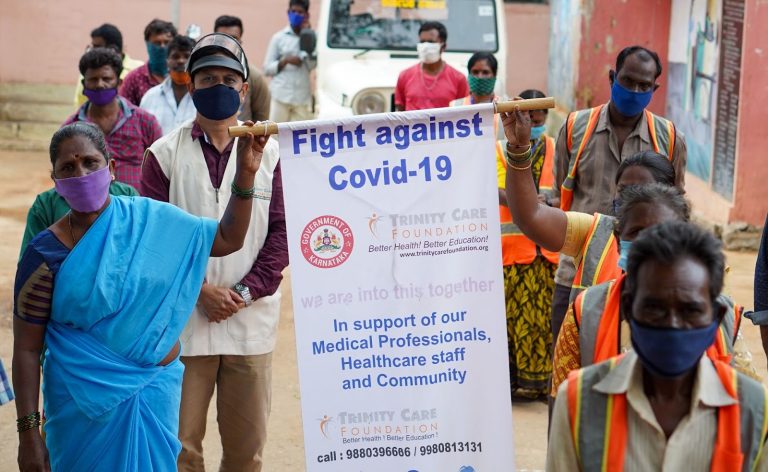
In part, the lag stems from a digital divide: Until June, 18- to 44-year-olds had to register on the government’s CoWin platform to get a shot, though hundreds of millions of Indians lack access to smartphones or the internet, leaving them in the lurch.
There’s also the expense. India’s federal government had paused purchasing from manufacturers between May 1 and June 21, leaving individual states and private hospitals to compete with one another to broker deals with manufactures at a higher price. In mid-May, several states suspended vaccinations for people aged 18 to 44 due to shortages. Some accuse the Serum Institute of India and Bharat Biotech, the two domestic vaccine manufacturers, of profiteering during the pandemic while the federal government tossed its hands in the air.
Under the new policy implemented on June 21, 75 percent of all vaccines are purchased and allocated to the states by the government and administered to citizens free of charge. This has picked up the pace of daily dosage delivery in India, though it comes with consequences to the global vaccine rollout: Serum, originally meant to serve as the largest supplier for the WHO’s COVAX program, says it will be unable to export vaccines abroad for the rest of the year. Moreover, the international policy still allocates 25 percent of vaccines to private clinics, where prices are too high for a majority of Indians.
The result? Vaccine drives are more on track than they were earlier this year, but the virus has continued to wreak havoc. There are around 30,000 new cases each day in India, with more than 400,000 total deaths since March of 2020 — all while experts suggest there may be a deadly third wave around the corner.
Reporting by Nicole Botha, Eloise Goldsmith, Liana Petruccelli, Paige Ozvald, and Jessica Moss.
